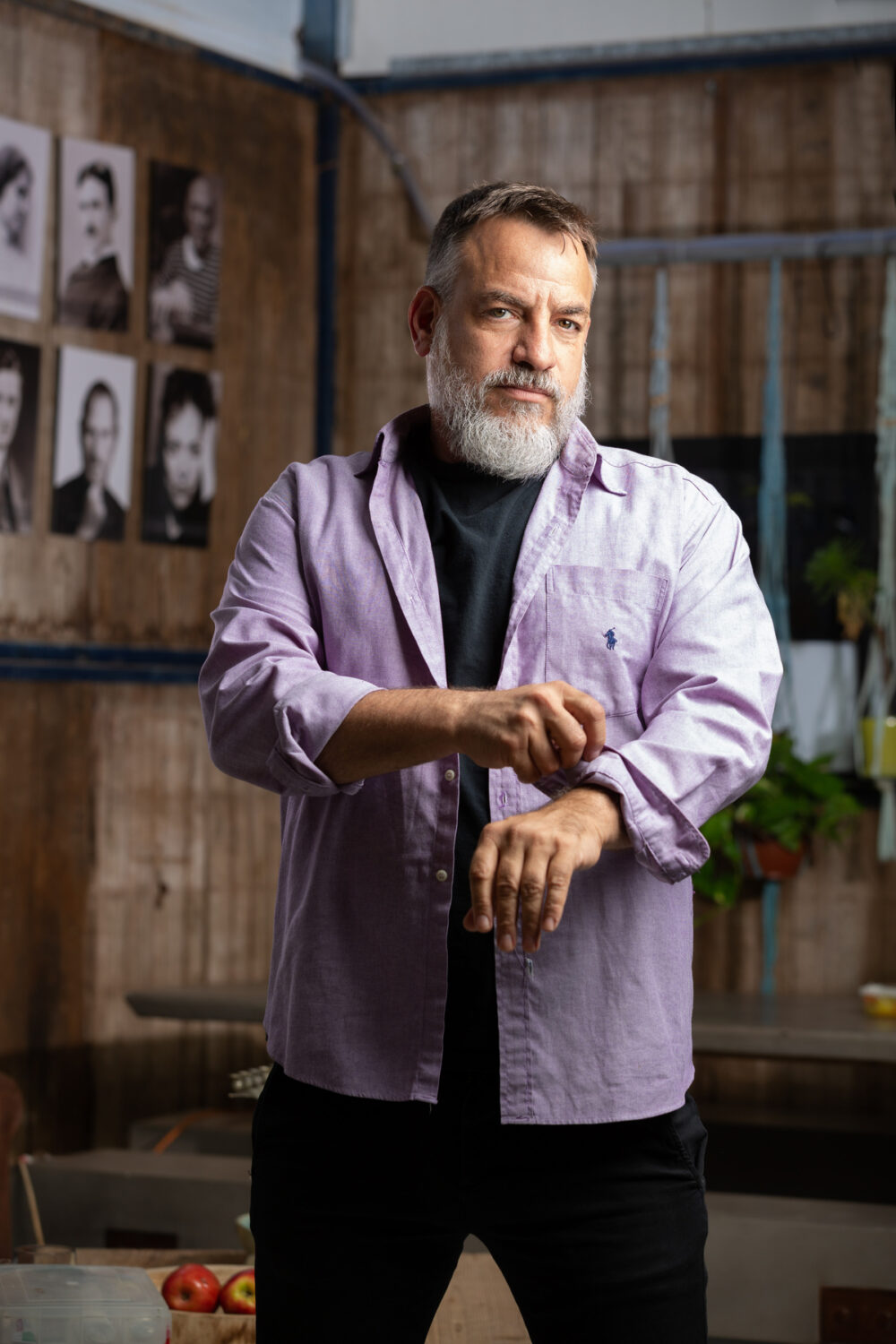
Storing solar energy between sunset and sunrise is a huge challenge.
Nostromo Energy decided to meet that challenge by using an unlikely substance: water.
Installed on the roof, basement or walls of commercial and industrial buildings, Nostromo’s modular IceBrick stores energy in ice capsules and directs it to commercial space cooling, which accounts for up to 45 percent of global global power demand during peak hours.
Social activist Yaron Ben Nun, founder and chief technology officer of Nostromo Energy, said lithium-ion batteries are the prevailing technology for storing solar energy and assuring grid stability “because they work.”
“But lithium ion cannot be a lasting solution for the grid because we’ll have mountains of lithium waste that is not easy to mitigate. We must have clean, sustainable technology.”

Ben Nun, a self-described “air-conditioning addict,” is a trained electrician with experience in energy management and conservation.
His research revealed that ice is a safe, effective material to hold energy. And it is sustainable, as the same water can be frozen and melted over and over.
“The grid loses multiple megawatts at sunset every day, and that demands huge amounts of storage. Just by freezing water, we can take care of 45 percent of the load on the grid,” said Ben Nun.
“I’m not the first to think of this idea, but you don’t see these systems everywhere because of poor engineering and performance, too large a footprint and an unattractive appearance,” he said.

In 2016, Ben Nun got investments from family and friends and began development of a new energy storage cell for the commercial market that could overcome these drawbacks.
“We designed a cell with high properties of efficiency, depth of discharge, and stability,” he said.
A designated chiller charges the IceBrick array by circulating antifreeze through it at minus 3 degrees Celsius (about 27 degrees Fahrenheit). The chiller uses cheap or surplus electricity from the grid at off-peak hours or from renewable resources, Ben Nun explains.
“We are in a very strange and magnificent time, and we believe our technology is an essential tool for decision-makers to mitigate the huge challenges coming toward us,” said Ben Nun.
Pilot projects in U.S. and Israel
Nostromo has research and development projects with Royal Dutch Shell and the Israel Electric Corp., and partnerships with several American engineering companies.
In February, Mayo A. Shattuck III, chairman of American energy giant Exelon, announced a $500,000 personal investment in the Israeli company.
In April, Nostromo announced a 20-year agreement with the Hilton Beverly Hills to install a 1.5 MWh system serving both the Hilton and the adjacent Waldorf Astoria.
Ilana Shoshan, general manager of Nostromo’s U.S. West Coast operations, said that in California, “utilities are sometimes forced to initiate rolling blackouts, impacting hundreds of thousands of homes and businesses during peak summer hours. Wide deployment of Nostromo systems in commercial and industrial buildings can help prevent the phenomenon.”

Nostromo also signed an agreement with Sandstone Properties for the construction of a 900-kWh system in a Los Angeles office building; and a memorandum of understanding with Westfield, one of the biggest mall owners and operators in the U.S., to install systems at its sites.
In June, Nostromo completed a merger with the Tel Aviv Stock Exchange listed company Somoto, raising $13.6 million in the process.
An IceBrick was installed the following month on the roof of Medinol, a Jerusalem-based cardiac stent developer and manufacturer. The 600-kWh system contains 48 cells of encapsulated ice connected to the charging chiller, providing critical backup to Medinol’s clean rooms cooling system.
Pilots in 20+ countries
Now, Nostromo will have the opportunity to pilot its solution in about 20 countries, thanks to its acceptance into the Anheuser-Busch InBev 100+ Accelerator. The company won one of 36 spots in the accelerator’s 2021 cohort, from a field of 1,300 applicants.
Geared to meet the beverage giant’s climate action goals, the 100+ Accelerator was launched in 2018 and was joined this year by Coca-Cola, Colgate Palmolive and Unilever to fund and pilot sustainable innovation in their supply chains.

Nostromo will demonstrate how the IceBrick could accelerate renewable energy integration, reduce carbon emissions and enable electric vehicle charging at AB Inbev’s corporate facilities. Data on energy use and cooling demands will be collected and analyzed from different sites.
“Together, we are striving to supercharge adoption of sustainable solutions by funding and accelerating fantastic innovations that will change the world by making all of our businesses more sustainable at a global scale,” said Carolina Garcia, global sustainability and innovation director for AB InBev.
For more information, click here.
Produced in associationwith Israel21C.
The post Cool Way To Chill: How Ice Can Be Used To Store Solar Energy For Air Conditioning appeared first on Zenger News.




